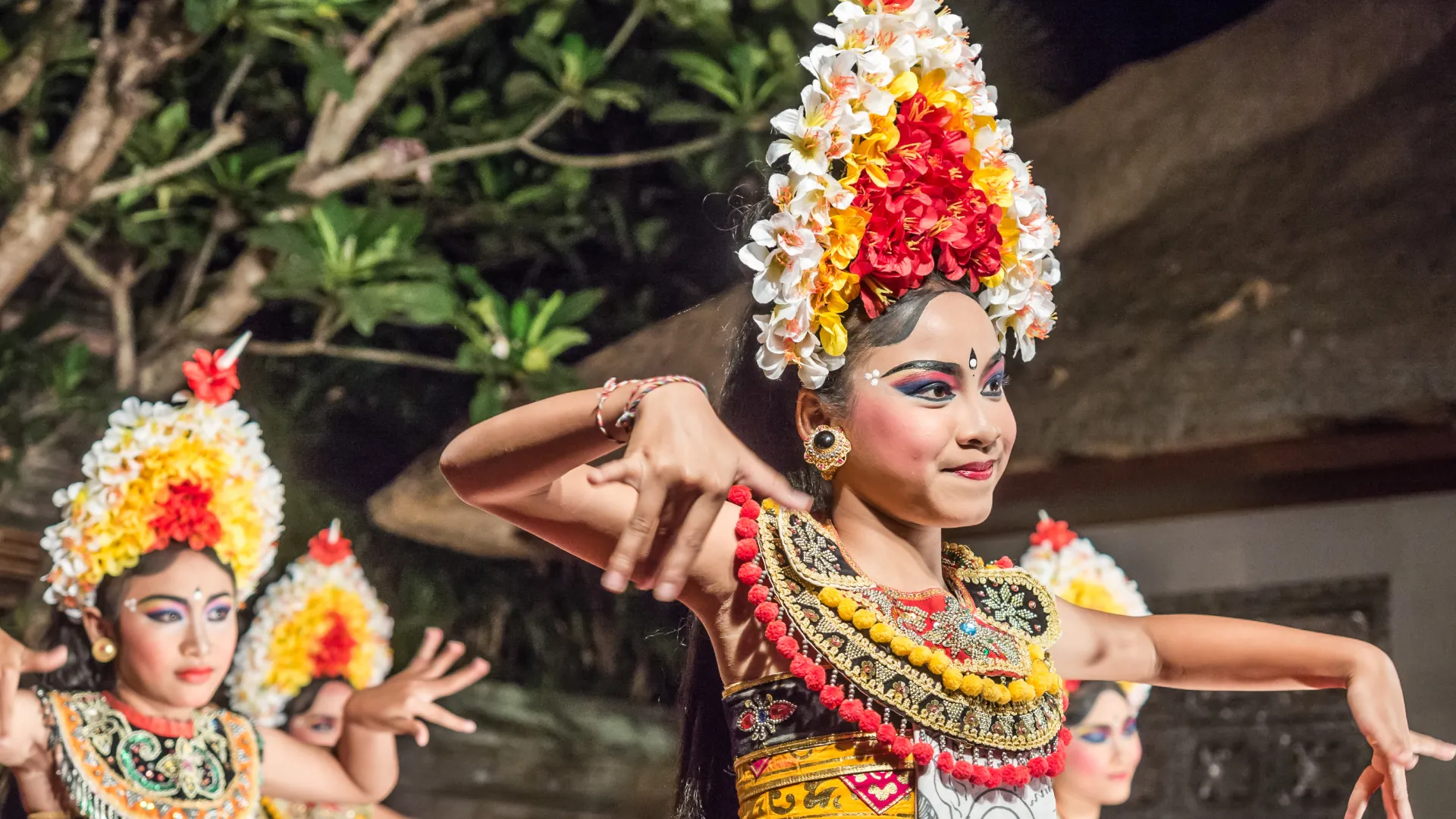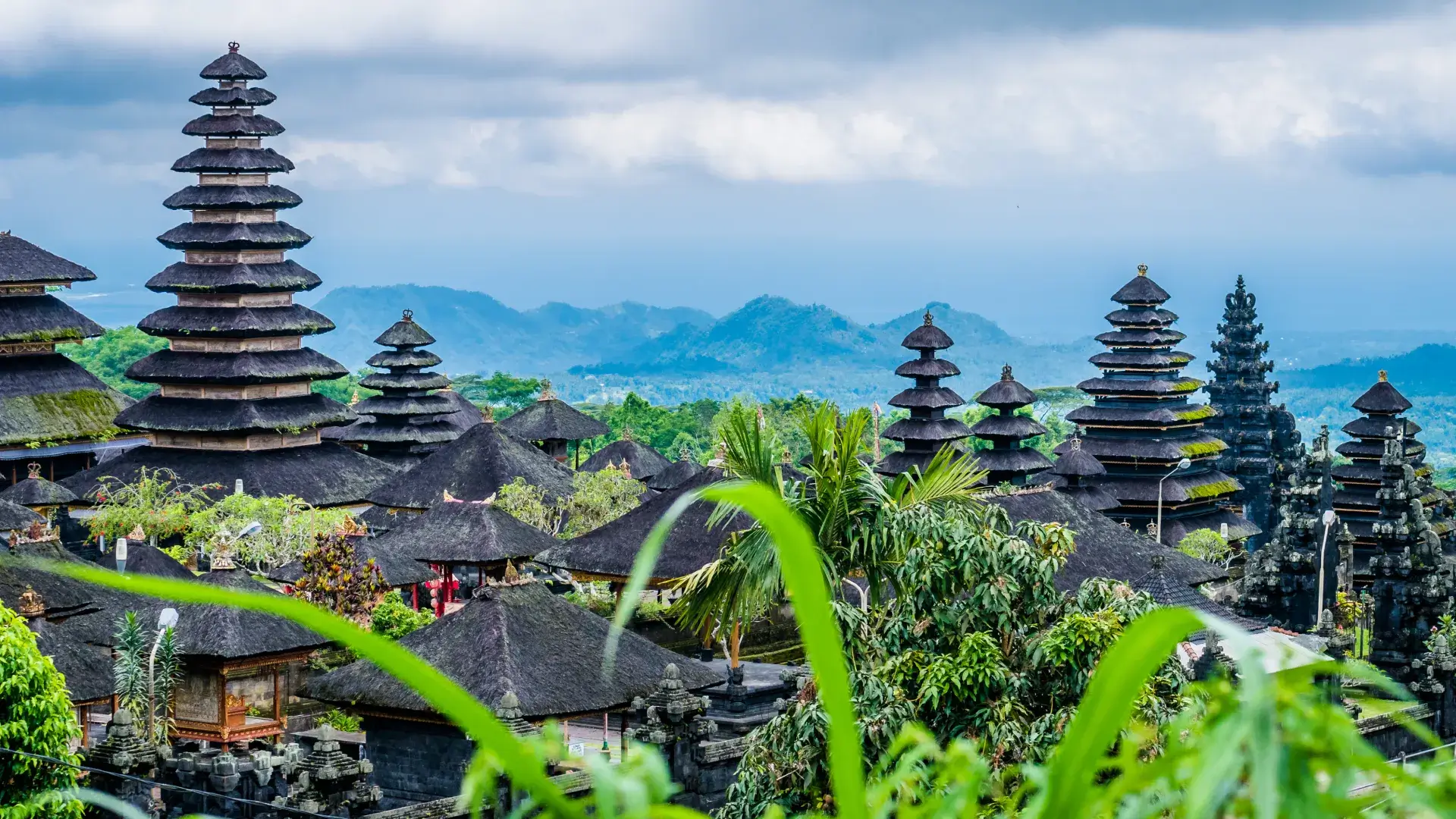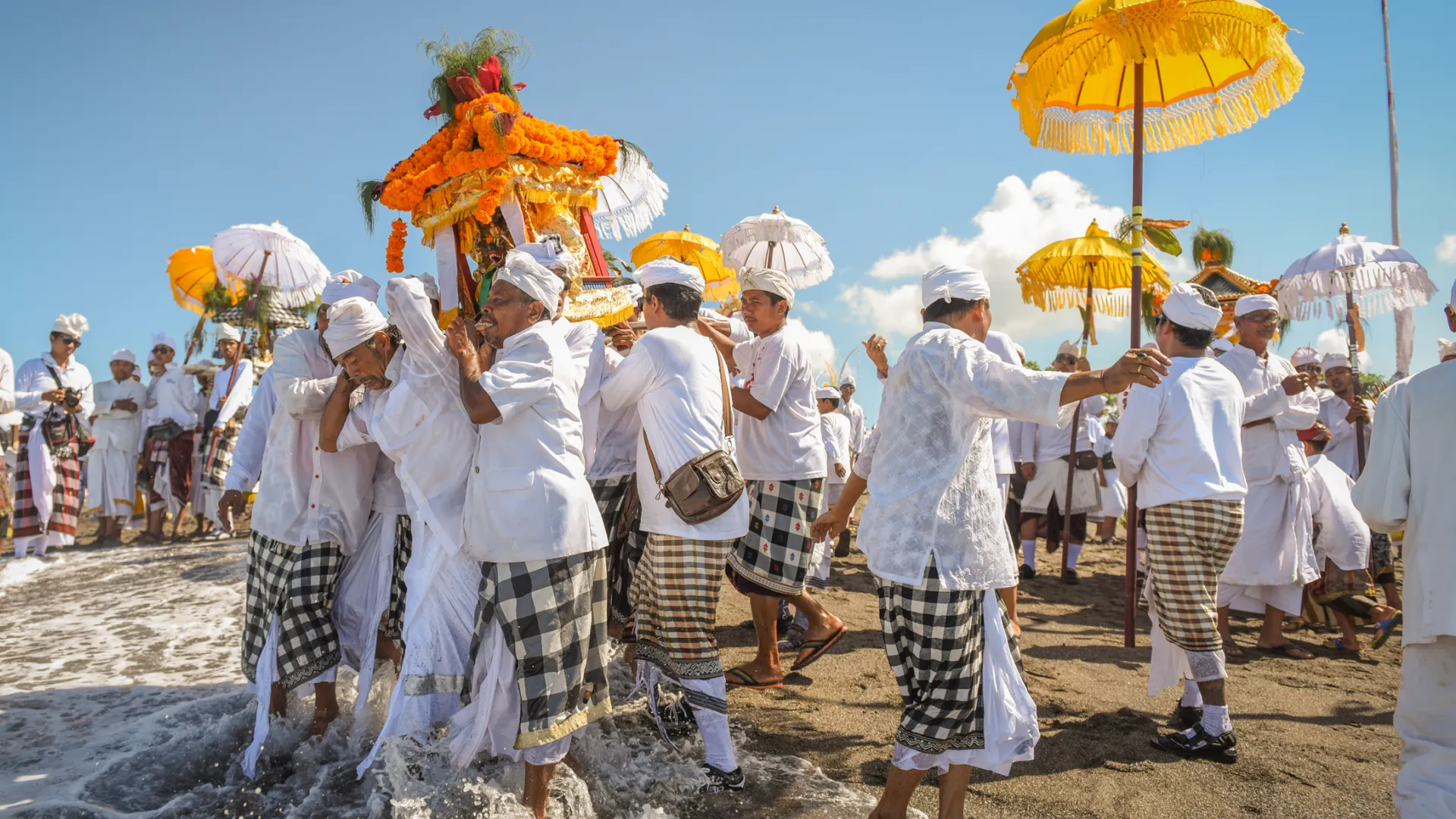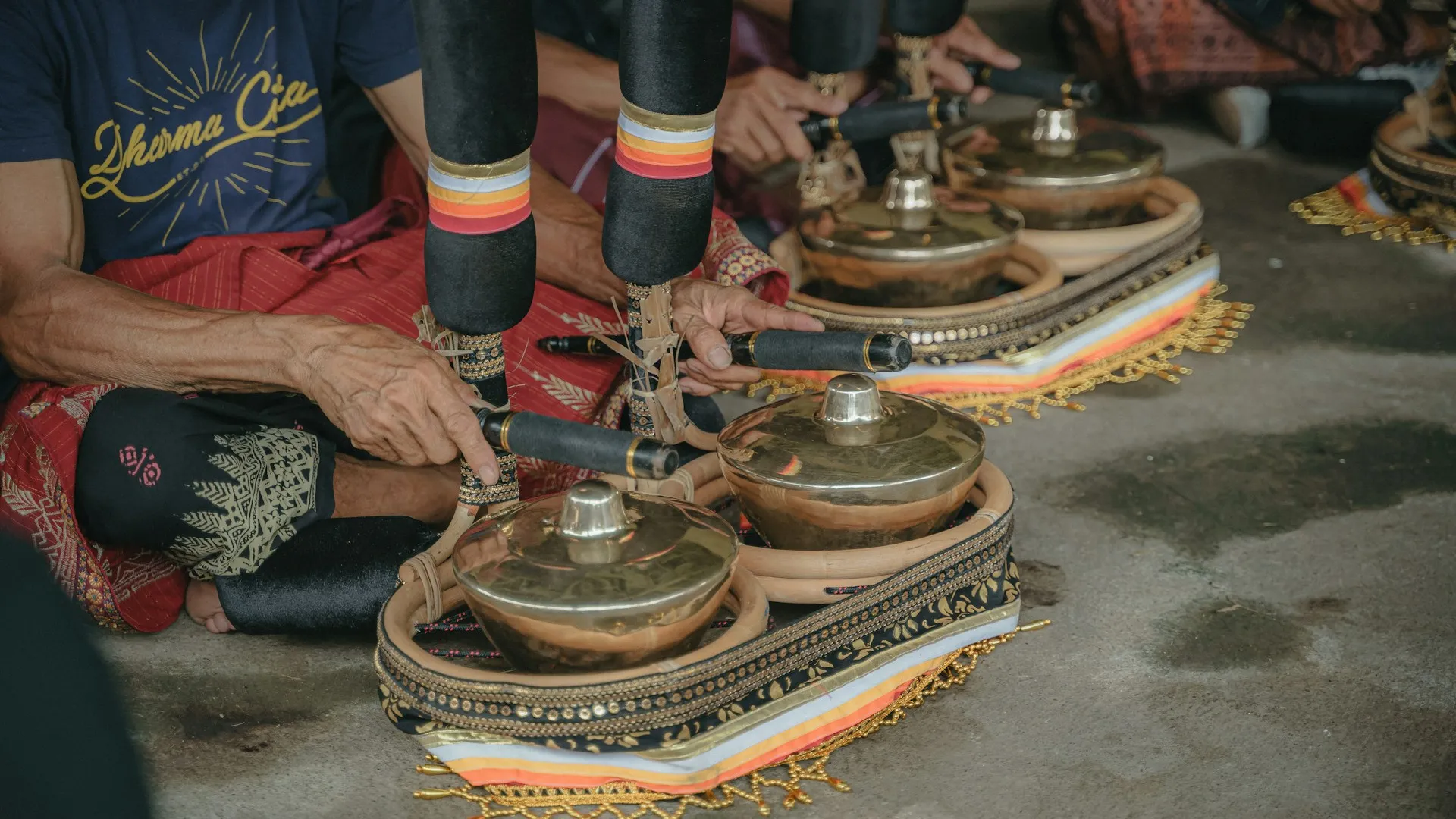|
Key Takeaways:
|
As the sun sinks low beyond the cliffs of Uluwatu, casting a blazing light over the sea, a group of men starts chanting together;
“chak-chak-chak.”
Their voices ebb and flow in a captivating cadence, saturating the atmosphere with a vitality that feels nearly unearthly.
This is the Kecak Dance, a highly renowned and vibrant cultural performance of Bali. Originating from ancient ceremonies, Kecak merges theatrical narration with only rhythmic vocal chants, no gamelan instruments included, bringing the legendary stories of the Ramayana to life.
It’s the view of the essence of Bali, a call to experience tradition blended with the island’s natural charm and cultural heart.
The Origins of Kecak: From Ritual to Performance
The origins of the Kecak Dance are deeply embedded in Balinese spirituality, where it originated as a trance ritual referred to as sanghyang.
In its initial version, Kecak focused more on connecting with spirits than on narrating stories.
Community members would come together to chant, leading chosen individuals into a trance state to receive divine messages, frequently as a means of safeguarding their neighbourhoods from sickness or bad luck.
This ritual, centred around chanting, was thought to connect the physical realm with the spiritual, establishing a space where human voices could invoke divine guidance.
At that time, Balinese beliefs intertwined Hindu influence with traditional animistic practices, creating rituals that celebrated both the deities of the Hindu pantheon and the local spirits. This spiritual blend influenced the core of Kecak, as the trance-inducing cadence of the chants formed a strong method for linking the community to the unseen.
In the 1930s, Kecak experienced a notable change, transitioning from secluded village rituals to open performances. These cross-continent artists, Walter Spies and Wayan Limbak, enchanted by Bali’s traditions, worked together to transform the ritual into a theatrical performance for wider audiences.
He integrated the famous stories from the Ramayana, utilising the trance chant as a foundation for a powerful retelling of Prince Rama’s mission to save Sita (Sinta) from the demon ruler Ravana (Rahwana).
This adaptation elevated Kecak from obscurity to prominence, changing it from a sacred ceremony into a mesmerising spectacle that now captivates audiences globally.
The Choreography and Structure of Kecak Dance
The kecak dance is usually performed by approximately fifty to one hundred men who wear only loincloths, leaving their upper bodies exposed. They create concentric circles, with a traditional Balinese coconut oil lamp at the centre.
Initially, they sway their bodies rhythmically from side to side, constantly chanting the phrase “chak ke-chak ke-chak ke-chak” in synchronised harmony and tempo, at a slow pace.
Slowly, the tempo increases, and alternately they raise their hands, shaking, into the sky. The kecak sound can be categorised as a “musical” presentation that solely utilises the human voice without any musical instruments.
The dance is executed for dance-dramas, and the narrative showcased is derived from the Hindu epic Ramayana. The bare-chested male kecak singers portray Rama’s army of Vanaras (monkeys) and Ravana’s forces of Rakshasas (demon giants).
The length of the performance is approximately one hour. The narrative of the Ramayana unfolds, starting with the exile of Sita and Rama in the Dandaka forest. The presentation recreates the sighting of the Golden Deer, the kidnapping of Sita by Ravana, the conflict between Ravana and Jatayu, Hanuman’s quest for Sita, and concludes with the showdown between Rama and Ravana. The kecak performers vocalise and sing based on the atmosphere and feelings of the narrative.
Kecak dance shows in Bali generally occur every evening (6 pm, Bali time) at Hindu temples like Tanah Lot and Uluwatu Temple. In Ubud, Garuda Wisnu Kencana, Batu Bulan, Pandawa Beach, and various other locations in Bali, there are dance stages dedicated solely to kecak performances.
Kecak shows are also held on other occasions, including cultural and entertainment exhibitions. Dancers typically originate from nearby villagers around the performance location; they often have a primary occupation besides dancing that they complete prior to presenting the kecak dance.
Uluwatu Temple is the top location for kecak dance shows.
Kecak’s Cultural and Global Impact
What started as a sacred village ritual has now captivated audiences worldwide, enchanting travellers and motivating artists well beyond Bali’s borders. The mesmerising rhythm and eerie chants of Kecak have emerged as emblems of Balinese culture, attracting travellers keen to experience its primal strength.
Throughout the years, Kecak dance has evolved Kecak into an inspiration for musicians, dancers, and theatre directors around the globe.
From orchestras incorporating Kecak-inspired beats into contemporary pieces to dance groups exploring its vocal-centric approach, Kecak’s raw energy has inspired numerous artistic endeavours.
With Kecak’s popularity increasing, its variations have also expanded. Contemporary adaptations merge Kecak with modern influences, introducing innovative takes on the traditional art form. In experimental theatre, for example, Kecak is integrated into multimedia shows featuring lighting effects, fresh vocal harmonies, and reinterpretations of the Ramayana.
Kitaro’s song “Magical Wave” contained an extensive sample of Kecak chants throughout his track.
Fusion performances blend Kecak’s chanting circles with various traditional dances or electronic music, resulting in vibrant cross-cultural displays.
Nevertheless, every adaptation respects the core of Kecak while reinventing it for fresh audiences, demonstrating that this Balinese heritage, grounded in ritual, persists in evolving and inspiring.
Watching Kecak Today: Tips for Travelers
Experiencing Kecak in Bali is a must, and there are several stunning locations to choose from, each offering a unique setting that enhances the dance’s mystical allure.
Here are some of the best places to watch Kecak, along with tips on how to get there, the best times to visit, and ticket details.
1. Uluwatu Temple
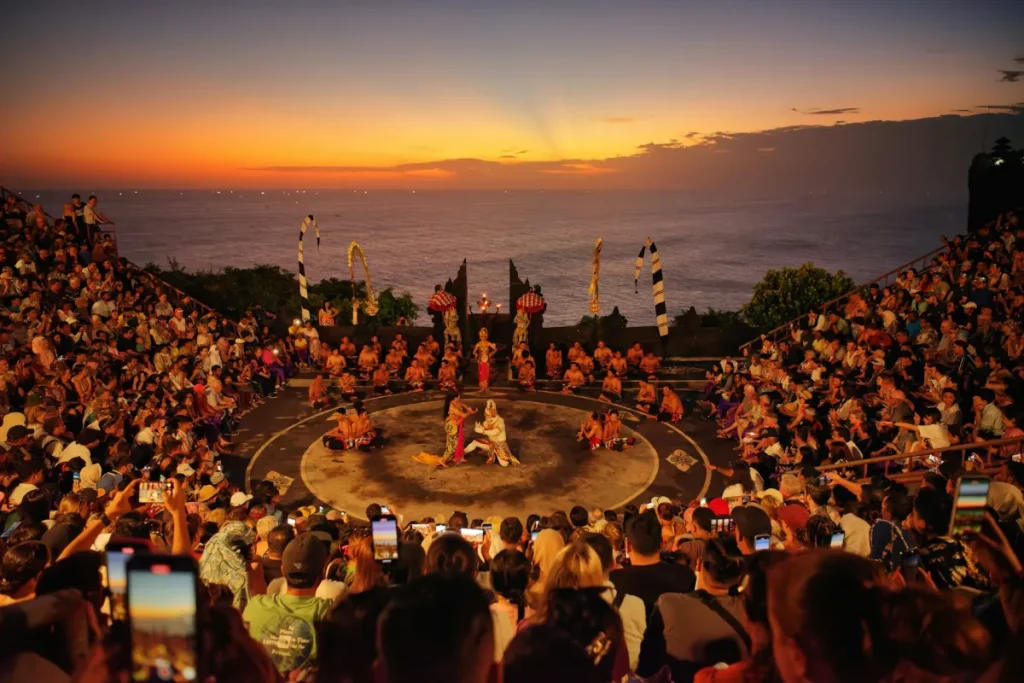
Overview: Uluwatu Temple is the top spot for experiencing Kecak. Perched on a striking cliff that plunges into the Indian Ocean, Uluwatu offers an unrivalled panorama as the sun descends right over the water, spreading golden tones across the scenery.
Best Time to Go: The show typically starts at 6:00 pm to align with sunset, so it’s advisable to arrive by 4:30 pm to tour the temple and secure a prime seat.
Ticket Details: Tickets cost approximately IDR 150,000 (~USD 10) and are available for purchase directly at the temple. In peak season, tickets can become unavailable, so it’s advisable to arrive early.
How to Get There: Situated in South Bali, approximately 45 minutes from Kuta, Uluwatu Temple is conveniently reachable by scooter or taxi. Numerous tour operators provide packages that encompass both transportation and ticket admission.
Where to Stay: Exquisitely crafted 5-bedroom villa, Villa Kusuma is the perfect place for your stay. Just a 13-minute drive from Uluwatu temple, this villa offers an ideal Balinese retreat featuring a spacious swimming pool, numerous outdoor dining areas, two distinct living rooms, a vast garden, breathtaking ocean views, a modern kitchen, all supported by premium amenities and in-villa services.
2. Tanah Lot Temple
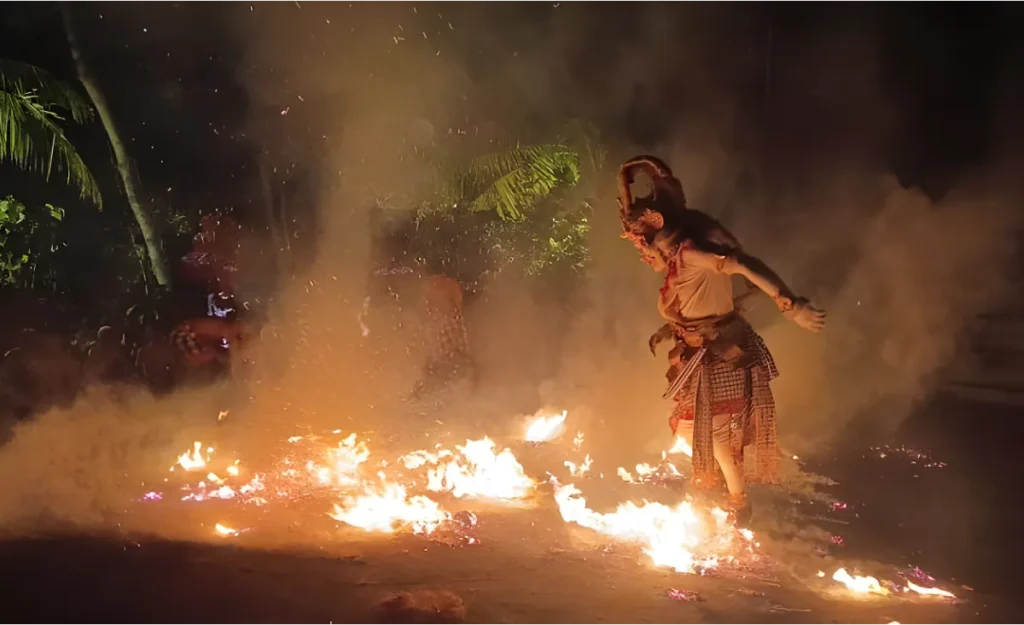
Overview: Renowned for its distinctive seaside location, Tanah Lot is celebrated for the waves crashing against its temple and its breathtaking sunsets. Although Kecak performances are not held every night, special Kecak shows are sometimes organised in this remarkable oceanfront location.
Best Time to Go: If you happen to see a show, get there by 5:00 pm to investigate the temple and the nearby area, and get ready to remain until sunset.
Ticket Details: Admission to Tanah Lot costs IDR 60,000 (~USD 4) for adults and IDR 30,000 (~USD 2) for kids; however, Kecak tickets could be purchased separately for specific occasions.
How to Get There: Tanah Lot is approximately a 25-minutes drive from Pererenan area and can be reached by car, scooter, or via day tour packages that include both transportation and entrance.
Where to Stay: The Tropical Door offers an extensive selection of villas in the Pererenan area that you can select from. Whether it’s the contemporary 2-bedroom Villa Vybe, the chic 4-bedroom Villa Lava, or the stunning 8-bedroom La Boheme Mansion.
3. Garuda Wisnu Kencana Cultural Park (GWK)
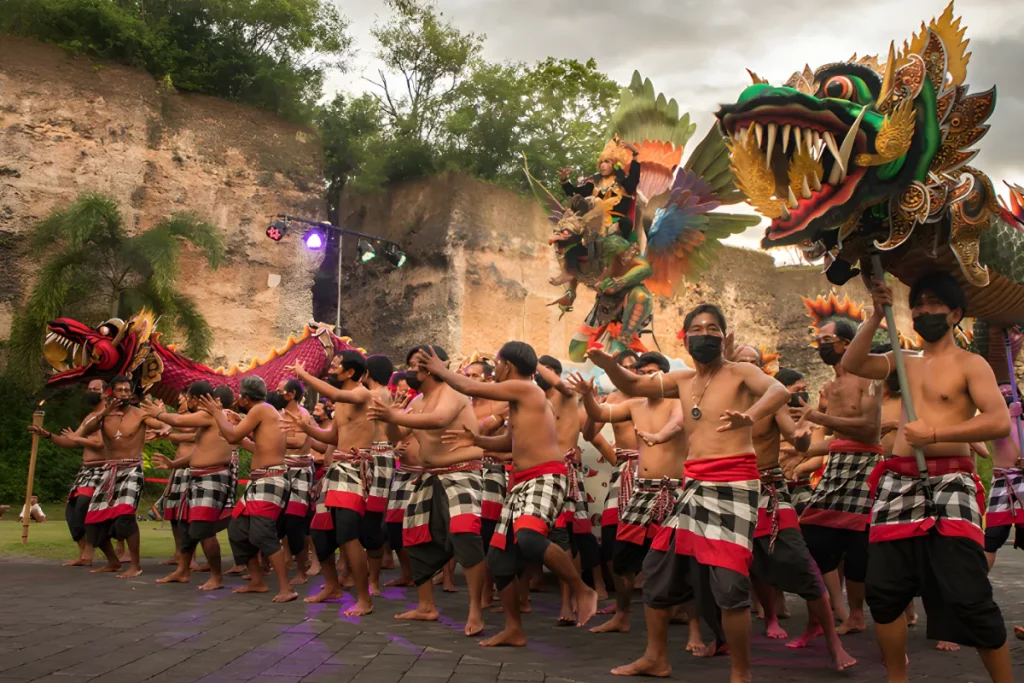
Overview: GWK features a magnificent statue of Vishnu on Garuda and is located within an extensive park showcasing cultural displays. Kecak is staged in this amphitheatre, offering a close-up perspective that’s perfect for photography and immersing oneself in the performance.
Best Time to Go: Performances begin at approximately 6:30 pm, giving guests the opportunity to explore the park first. Getting there by 4:00 pm allows you to wander the area and see the statue.
Ticket Details: Entry to the park costs IDR 125,000 (~USD 8) for adults, plus an extra charge for Kecak performance tickets.
How to Get There: Garuda Wisnu Kencana theme park is approximately a 25-minutes drive from Jimbaran area. Taxis, scooters, and guided tours that offer transportation are widely favoured choices.
Where to Stay: You could choose between our premium Villa Beyond The Sea or Villa Namaskar. Both of them are equipped with premium amenities, 5 luxury bedrooms, and breathtaking views.
4. Pandawa Beach
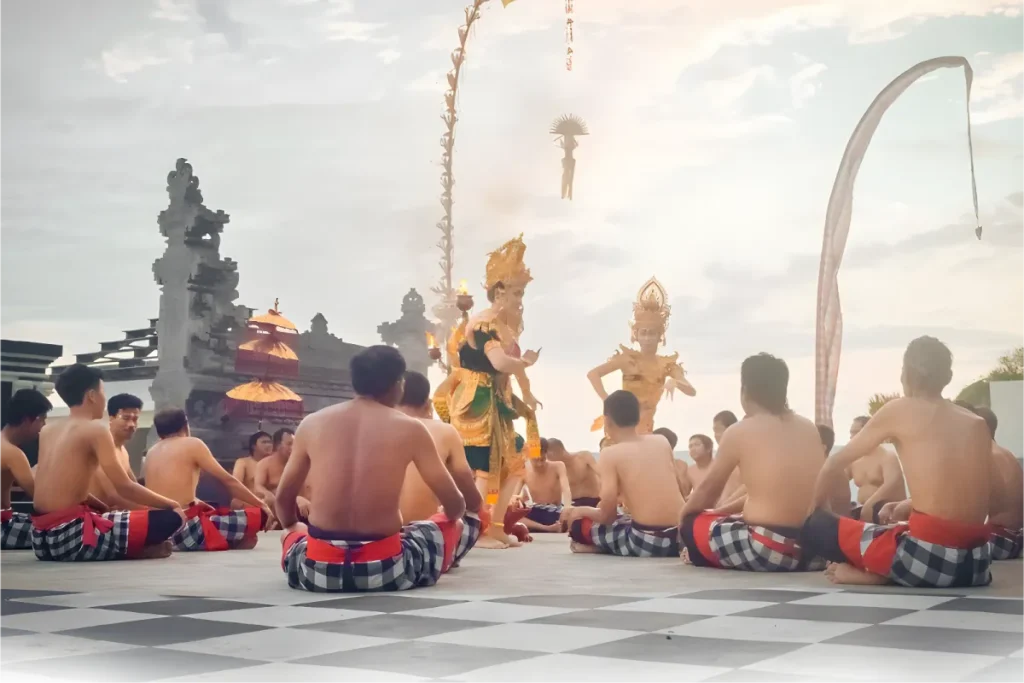
Overview: Located amid white sands and turquoise waters, Pandawa Beach provides a more personal and laid-back Kecak experience, featuring performances directly on the beach. The natural environment brings an additional touch of enchantment to the night.
Best Time to Go: Performances begin shortly before sunset, so aim to get there by 5:00 pm to enjoy the beach scenery, possibly swim, and settle into a nice location.
Ticket Details: Access to Pandawa Beach is priced at IDR 15,000 (~USD 1) for each individual, and Kecak tickets can be purchased on location. Prices can differ based on the event.
How to Get There: Situated in South Bali, approximately 1 hour from Denpasar, Pandawa Beach can be reached by car or scooter. It’s a simple day excursion from Kuta or Seminyak, and numerous local drivers are familiar with the path.
Where to Stay: As this beach is located on the southmost part of Bali, Villa Kusuma is also the perfect place for your stay. It takes about a 23-minute drive to Pandawa beach from this villa.
5. Melasti Beach
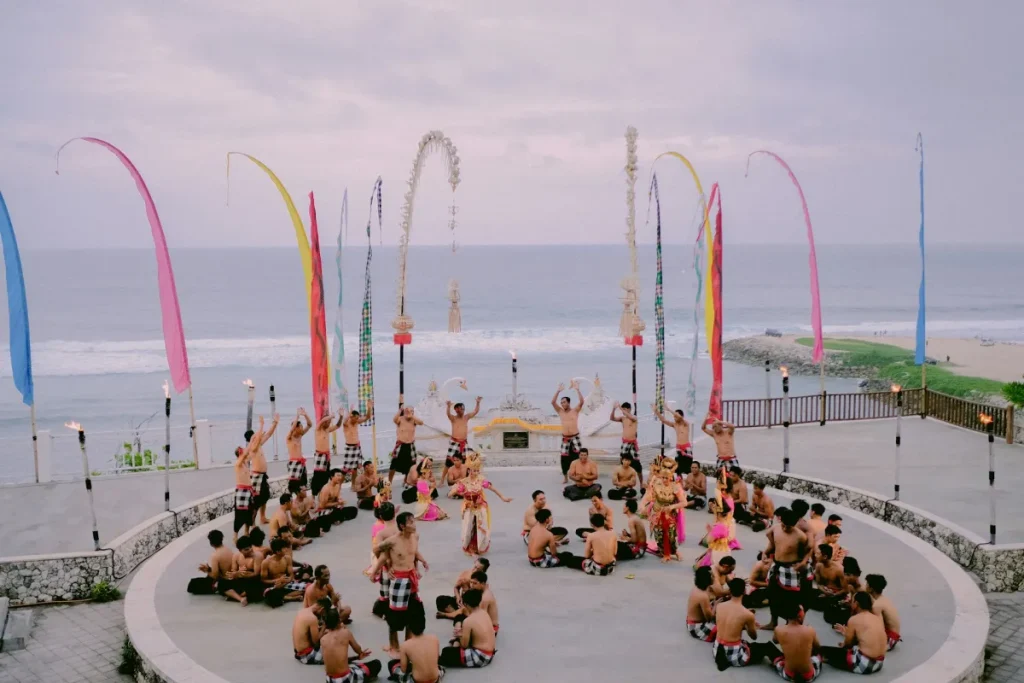
Overview: Melasti Beach, a secret treasure of Bali, features stunning views with its limestone cliffs and crystal-clear blue waters. In this location, Kecak is staged at the cliff’s base, forming a natural amphitheatre that enhances the sound and ambiance.
Best Time to Go: Shows begin near sunset, making it best to get there around 5:00 pm. Seize the chance to stroll on the beach and enjoy the views of the cliffs.
Ticket Details: Access to Melasti Beach costs IDR 10,000 (~USD 0.65), while tickets for the Kecak performance can be bought at the venue for approximately IDR 100,000 (~USD 7).
How to Get There: Situated roughly 45 minutes from Kuta, Melasti Beach can be reached by car, scooter, or with a private driver. The paths leading to the beach are well-kept and picturesque, creating a pleasant drive.
Where to Stay: same as Pandawa beach, you can easily reach this beach from our Villa Kusuma. It only takes around a 15-minute drive to Melasti Beach from this villa.
Insider Tip
No matter which location you choose, arriving early is key. Not only does this ensure you get the best seats, but it also gives you a chance to soak in the setting before the performance begins.
Bring a light jacket, as the ocean breeze can be cool in the evening, and a camera to capture the stunning blend of Balinese culture and natural beauty.
The Bottom Line
Bali’s Kecak Dance offers a deep dive into the essence of the island, framed by stunning scenery. Whether sitting on a cliff at Uluwatu or near the surf at Tanah Lot, witnessing the Kecak is an exploration of Bali’s spiritual and cultural core.
